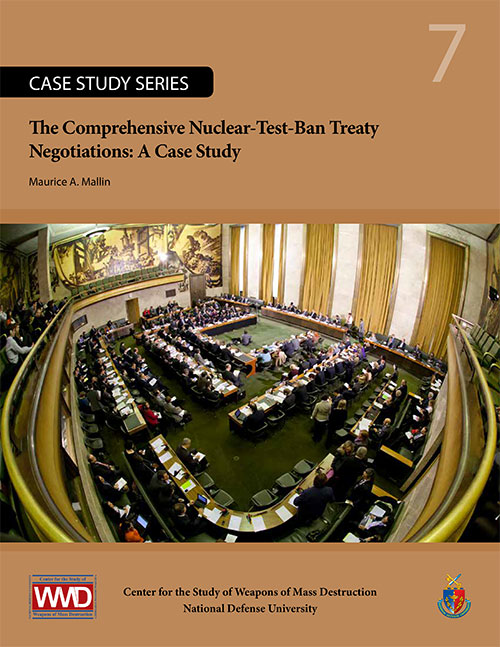DOWNLOAD PDF
 Introduction
Introduction
On July 16, 1945, the United States conducted the world’s first nuclear explosive test in Alamagordo, New Mexico. The test went off as planned; a nuclear chain reaction, in the form of an explosion, could be created.1 Less than a month later, nuclear weapons were used to support Allied efforts to end World War II.
Just 4 years later, on August 29, 1949, the Soviet Union conducted its first nuclear test. The United States intensified efforts to develop the hydrogen bomb, which it tested in 1952. The development of new nuclear weapon designs, as well as the imperative to test these designs, were now inextricably linked. Nuclear tests were considered essential to maintaining confidence in the effectiveness and usability of these weapons.
Since the Alamogordo test, upwards of 2,000 nuclear tests have taken place globally. Of these, 528 were conducted in the atmosphere, with significant environmental consequences.2 Between 1945 and 1950, seven atmospheric nuclear tests took place. As the Cold War escalated, weapons testing accelerated: 63 such tests occurred between 1951 and 1954.3 Three of these were conducted by the United Kingdom, who joined the nuclear “club” with a test in 1952 (France tested in 1960, followed by China in 1964).
In 1954, after an unexpectedly powerful and environmentally damaging test called Castle Bravo took place over Bikini Atoll in the Asia Pacific,4 Indian Prime Minister Jawaharlal Nehru called for a “standstill” in nuclear explosive testing: “Pending progress towards some solution, full or partial, in respect of the prohibition of these weapons of mass destruction, the Government would consider, some sort of what may be called a “standstill agreement” in respect, at least, of these actual explosions.”5
In 1958 the United States, the Soviet Union, and the United Kingdom undertook negotiations over a cessation of nuclear testing, but a number of issues, mostly related to verifying compliance, proved intractable.6 Some success was attained after the Cuban Missile Crisis, as the three parties agreed in 1963 to the Limited Test Ban Treaty (LTBT), which banned all nuclear testing in the atmosphere, in space, or underwater. Nuclear tests would henceforth be permitted only underground. Subsequent efforts to negotiate a complete cessation proved unsuccessful until 1994, when negotiations on a multilateral comprehensive nuclear test ban began in earnest.7
These negotiations were completed in 1996. Shortly thereafter, a treaty text was overwhelmingly supported at the United Nations. However, over 20 years later, the Comprehensive Nuclear-Test-Ban Treaty (CTBT) has not yet entered into force. As such, this case study will consider the following:
- the developments that led to the start of negotiations
- the perspectives of the key actors and their impacts upon the negotiations
- a summary of the negotiations, focusing on key issues and the efforts to reach resolution on them
- the endgame of the negotiations
- a few key lessons learned, which may have utility for future multilateral negotiations, touching on issues associated with leadership, factors that impact decisionmaking, and how a negotiation must balance national interests and negotiating objectives.
READ MORE >>